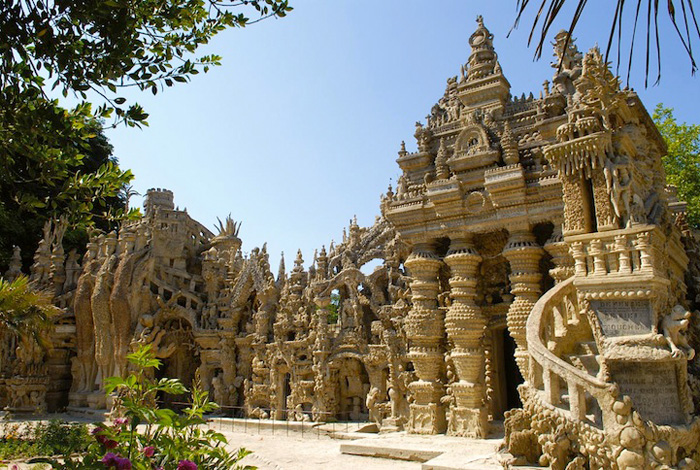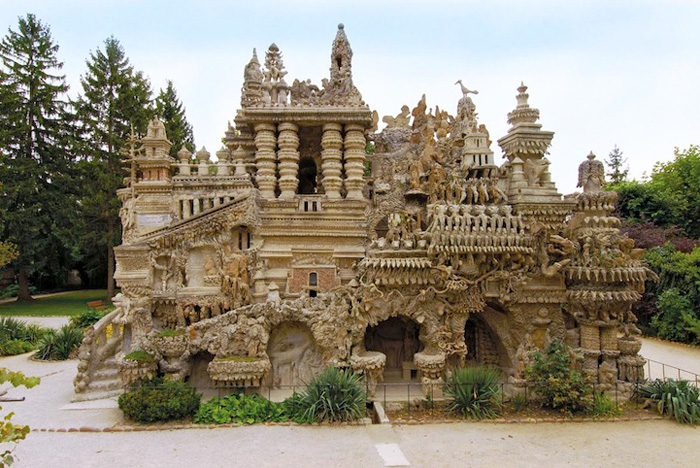Ferdinand Cheval's 'Palais Ideal' Was Built By One Man One Pebble At A Time
/
Looking at images of the 100-year-old ‘Palais Ideal’, it’s inconceivable that the architectural monument to nature and multiple religious influences is the work of a French postman. The true story behind the elaborate monument built in the village of Hauterives, France by Ferdinand Cheval over 30+ years is just this simple. The elaborate edifices of ‘Palais Ideal’ were inspired by pictures from magazines and postcards that Cheval delivered along his rural, 18-mile delivery route. It was originally called ‘The Temple of Nature’, says the website.
Cheval’s extraordinary example of naïve architecture stood its first small steps to realization in April 1879, documented in Cheval’s own words:
I was walking very fast when my foot caught on something that sent me stumbling a few meters away, I wanted to know the cause. In a dream I had built a palace, a castle or caves, I cannot express it well… I told no one about it for fear of being ridiculed and I felt ridiculous myself. Then fifteen years later, when I had almost forgotten my dream, when I wasn’t thinking of it at all, my foot reminded me of it. My foot tripped on a stone that almost made me fall. I wanted to know what it was… It was a stone of such a strange shape that I put it in my pocket to admire it at my ease. The next day, I went back to the same place. I found more stones, even more beautiful, I gathered them together on the spot and was overcome with delight… It’s a sandstone shaped by water and hardened by the power of time. It becomes as hard as pebbles. It represents a sculpture so strange that it is impossible for man to imitate, it represents any kind of animal, any kind of caricature.
I said to myself: since Nature is willing to do the sculpture, I will do the masonry and the architecture.
Initially, Cheval carried the stones in his pockets before switching to a basket. Soon he could be seen putting stones in his wheelbarrow, pushing it along his mail route. The dreamscape builder worked at night, building his monument by the light of a lamp.
Completed in 1912, the ‘Palais Ideal’ is today a destination for about 150,000 of amazed tourists every year. The site’s webpage notes that it was ‘built with no architectural rules’ and is regarded as a prime example of ‘outsider artwork’ — a free-spirited, rudimentary piece completed outside the bounds of traditional design principles. Perhaps the most poignant explanation for the eclectic masterpiece is an inscription Cheval carved once the palace was complete: ‘The dream of one man.’








